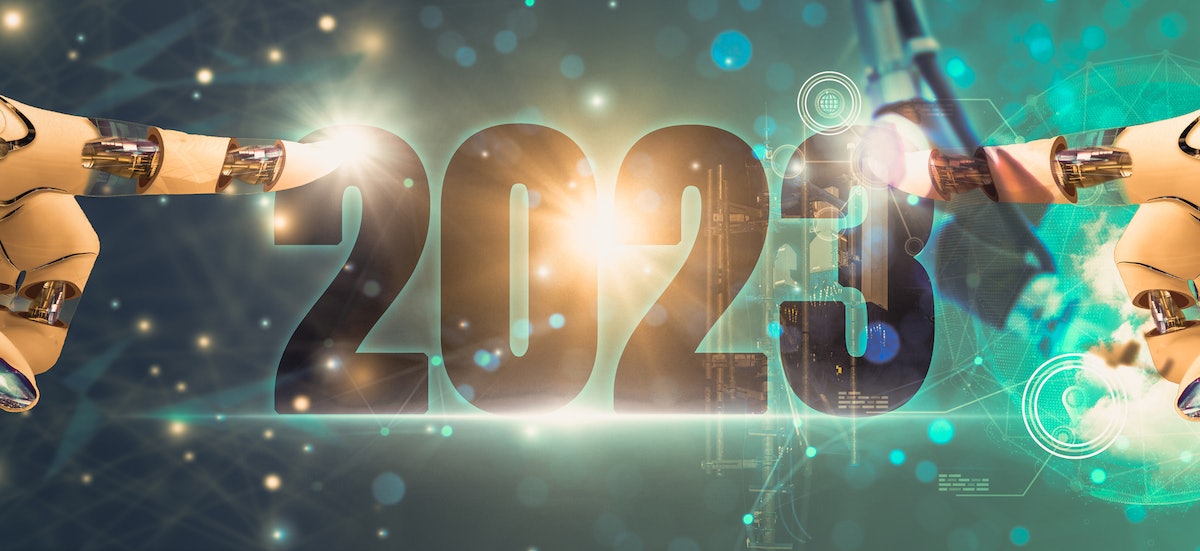New data from the International Federation of Robotics shows that in 2022, the stock of operational robots around the globe hit a new record of about 3.5 million units, while the value of installations reached an estimated $15.7 billion. Looking to 2023, IFR has identified five trends that will shape automation and robotics in the coming year. These include:
1.Energy efficiency: Energy efficiency is key to improving companies’ competitiveness amid rising energy costs; the adoption of robotics can in many ways help lower energy consumption in manufacturing. Compared to traditional assembly lines, significant energy savings can be achieved through reduced heating, while at the same time, the high speed of robots increases production rates, making manufacturing more time- and energy-efficient.
Today’s robots are also designed to consume less energy, which leads to lower operating costs. To meet sustainability targets for their production, companies are using industrial robots equipped with energy-saving technology such as robot controls that can convert kinetic energy into electricity, feeding it back into the power grid, and smart power-saving mode technology that controls the robot’s energy supply on-demand throughout the workday. Since industrial facilities need to monitor their energy consumption, such connected power sensors are likely to become an industry standard for robotic solutions.
2. Reshoring: Resilience has become an important driver for reshoring in various industries. For example, car manufacturers are investing heavily in short supply lines to bring processes closer to their customers. These manufacturers use robot automation to manufacture powerful batteries cost-effectively and in large quantities to support their electric vehicle projects, making the shipment of heavy batteries redundant.
Relocating microchip production back to the U.S. and Europe is another example of a reshoring trend. Since most industrial products nowadays require a semiconductor chip to function, their supply close to the customer is crucial. Robots play a vital role in chip manufacturing, as they meet the requirements for extreme precision. Specially designed robots can now automate silicon wafer fabrication, perform cleaning and cleansing tasks, or test integrated circuits.
3. Ease of use: The emergence of new automation platforms is making it easier for non-experts to program industrial robots, as OEMs work with low-code or no-code technology partners to enable users of all skill levels to program robots. New, easy-to-use software with intuitive user experiences is replacing extensive robotics programming and opening up new robotics automation opportunities. For example, a traditional heavyweight industrial robot can now be equipped with sensors and software that allow for collaborative setup operation. This makes it easy for workers to adjust heavy machinery to different tasks.
Easy-to-use programming interfaces that allow customers to set up the robots themselves are also driving a new segment of low-cost robotics. Many manufacturing customers reacted to the pandemic in 2020 by experimenting with robotic solutions. Robot suppliers acknowledged this demand, making improvements to their equipment for easy setup and installation, with preconfigured software to handle grippers, sensors, or controllers that support lower-cost robot deployment.
4. Artificial Intelligence (AI) and digital automation: Connected robots are transforming manufacturing. Robots will increasingly operate as part of a connected digital ecosystem, with cloud computing, big data analytics, or 5G mobile networks providing the technological base for optimized performance.
AI also holds great potential for robotics, enabling a range of benefits in manufacturing. The main aim AI in robotics is to better manage variability and unpredictability in the external environment, either in real time or offline. AI-supported machine learning will thus play an increasing role in areas such as optimizing processes and predictive maintenance. This technology will also help manufacturers, logistics providers, and retailers deal with frequently changing products, orders, and stock. The greater the variability and unpredictability of the environment, the more likely AI algorithms will provide a cost-effective and fast solution.
5. Second life for industrial robots: Since an industrial robot has a service lifetime of up to 30 years, new technology is giving old robots a second life. Industrial robot manufacturers are now running specialized repair centers close to their customers to refurbish or upgrade used units in a resource-efficient way. This prepare-to-repair strategy for robot manufacturers and their customers also saves costs and resources. Offering long-term repair to customers is an important contribution to the circular economy.



